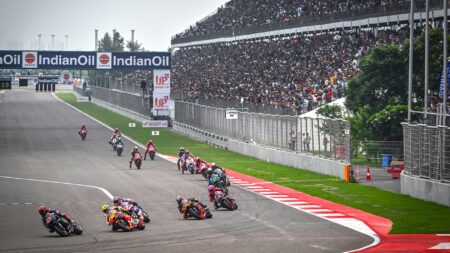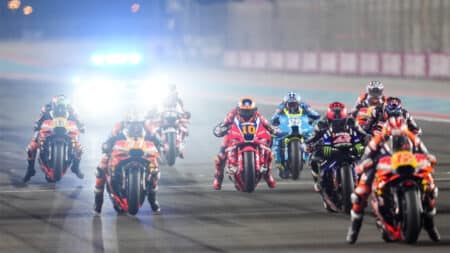The Hall of Fame was launched earlier this month at Misano and clearly defined the new F1-style strategy. Only MotoGP riders get to enter the HoF, so the current occupants are Giacomo Agostini, Mick Doohan, Geoff Duke, Mike Hailwood, Eddie Lawson, Jorge Lorenzo, Umberto Massetti, Dani Pedrosa, Wayne Rainey, Phil Read, Kenny Roberts, Valentino Rossi, Kevin Schwantz, Barry Sheene, Freddie Spencer, Casey Stoner and John Surtees.
I agree with Dorna’s idea of creating a separate space for the greatest kings of the class of kings. I’ve always thought no rider should be named a Legend unless they’ve won at least two MotoGP crowns (which, funnily enough, is the main requirement for entry to the HoF). Because winning the championship once already grants you entry to a very special club, therefore to be a member of the pantheon you need to have done more than that.
I was frequently bemused by some of Dorna’s choices of MotoGP Legend. Should you be a MotoGP Legend because you’ve won a single premier-class crown? No. But there are a few in there. Should you be a Legend if you’ve won a single intermediate championship? No. And likewise.
Losing 2001 250cc Daijiro Katoh in 2003 and 2008 250 champ Marco Simoncelli in 2011 were sad times for MotoGP, but I think making them legends was a mistake.
In other words, Dorna had got its knickers in a twist by inviting too many people to the party, so now it’s trying to make amends with its new VVIP area.
It’s not the only one. Bike racing’s governing body, the FIM (Fédération Internationale de Motocyclisme), now includes Formula 750 within its grand prix results book.
The 1980s paddock had twinkling motorhomes of premier-class superstars at one end and the rusting vans of the impoverished sidecar crews at the other
F750 was born in the earlier 1970s to answer a thirst among fans for large-capacity bike racing, because MV had turned MotoGP into a snore. The racing never took place at grands prix, so F750 wasn’t GP racing. Essentially, F750 was an early version of World Superbike, using street engines instead of street bikes.
Thus the FIM results book has Agostini down as the winner of 123 grands prix (68 x 500, 54 x 360 and 1 x 750). If that’s the case, Troy Bayliss is a 53-times GP winner (52 x WSBK, 1 x MotoGP). Counting F750 results as GP results is rewriting history, plain and simple.
If Moto2 and Moto3 are being marginalised, what else have the lower classes got to look forward to?
Dorna is planning to segregate the MotoGP paddock from the other paddocks, because it wants MotoGP to be all glitz and razzmatazz.
This won’t be the first time this has happened. A decade and a half ago, Dorna banned non-MotoGP riders from living in the paddock in camper vans to create more space for hospitality units, which had become such an important part of team/sponsor relations. Overnight the paddock became less of a global village and more of a mall (with many fine restaurants). Two-time MotoGP king Stoner cited this move as one of the reasons he fell out of love with racing.

A snowy Salzburgring in 1982, when the paddock was a bustling, slightly chaotic global village. This was the last year GP racing featured six classes
I remember much further back than that, in the 1980s, when the paddock was a kind of microcosm of a bustling modern city, with the vast, twinkling motorhomes of the premier-class superstars at one end and the rusting vans and mouldy awnings of the impoverished sidecar crews at the other.
When Dorna threw camper vans out of the paddock it also turned the paddock’s MotoGP hospitality area into a kind of VIP area, to which a regular paddock pass didn’t grant you access. The idea was to create a highfalutin enclave but instead it became a dead zone, full of nothing except metaphorical tumbleweed. The idea was soon abandoned.








